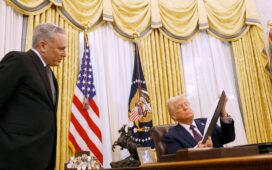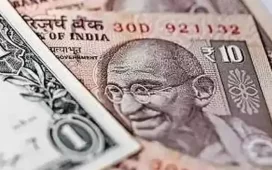The interim government has revised its aim for foreign exchange reserves, saying it expects to have $28.6 billion by June this year, capitalising on strong growth in inward remittances, exports, and budgetary support from development partners.
The budget initially set a target of $31.6 billion, based on the central bank’s gross calculation.
As of January 29, the gross forex reserve stood at $25.32 billion, down from $26.20 billion in June last year, according to Bangladesh Bank (BB).
Bangladesh Bank now publishes two types of forex reserve figures—one of which is based on a calculation method advised by the International Monetary Fund, known as BPM6. Based on this, reserves stood at $19.97 billion as of January 29.
On Wednesday, the finance ministry presented the revised forex reserve and other macroeconomic indicators at a meeting at the Chief Adviser’s Office, chaired by Chief Adviser Prof Muhammad Yunus.
To meet the revised target, forex reserves need to increase by $3.28 billion by June.
According to the finance ministry, substantial growth in remittances and exports will help increase the forex reserve.
There is also a high possibility of receiving $2.5 billion in budgetary support from three major development partners, including the International Monetary Fund, the Asian Development Bank, and the World Bank, by June.
Other bilateral and multilateral budgetary support is expected to contribute an additional $500 million to the forex reserve.
These prospects have made the finance ministry optimistic about increasing the reserve.
However, Zahid Hussain, former lead economist at the World Bank Dhaka Office, expressed scepticism about reaching the target.
“It’s true that exports and remittances are growing and that there is a high possibility of receiving budget support from development partners, but Bangladesh must pay various outstanding bills, including those for power, energy, and fertiliser imports,” he said.
“The government will have to import fuel and LNG (liquefied natural gas) to ensure uninterrupted electricity in the upcoming summer. Additionally, payments must be made for imports from India, including Adani Power,” he said.
He noted that a significant quantity of fertiliser must be imported for the Boro season, meaning much of the budget support would be used to meet these expenses.
“So, it will be difficult to raise the reserve by more than $3 billion from current levels,” said Hussain.
The government has also revised its export growth target to 10 percent, up from 8 percent in the original budget.
Meanwhile, remittance growth has been revised to 15 percent, doubling from the initial target of 7 percent.
Hussain described this as a modest and achievable target.
“The export sector has also witnessed satisfactory growth in the first six months despite labour protests, factory closures in the RMG sector, and violence,” he said.
According to the central bank’s balance of payments statistics, exports grew by 11 percent in the first six months of the current fiscal year.
Meanwhile, remittances increased by 27.56 percent during the same period.
However, the revised budget has lowered the import growth target to 8 percent from the original 10 percent.
Although imports have remained sluggish, they have shown signs of acceleration in recent weeks.
In the first six months, imports grew by 3.5 percent, recovering slightly after a 10.61 percent decline in the previous fiscal year.
The private sector credit growth target has been slightly increased to 9.8 percent in the revised budget, up from 9 percent in the original projection.
However, as of November, private sector credit grew by only 7.66 percent, falling short of the target.

 For all latest news, follow The Daily Star’s Google News channel.
For all latest news, follow The Daily Star’s Google News channel. 


